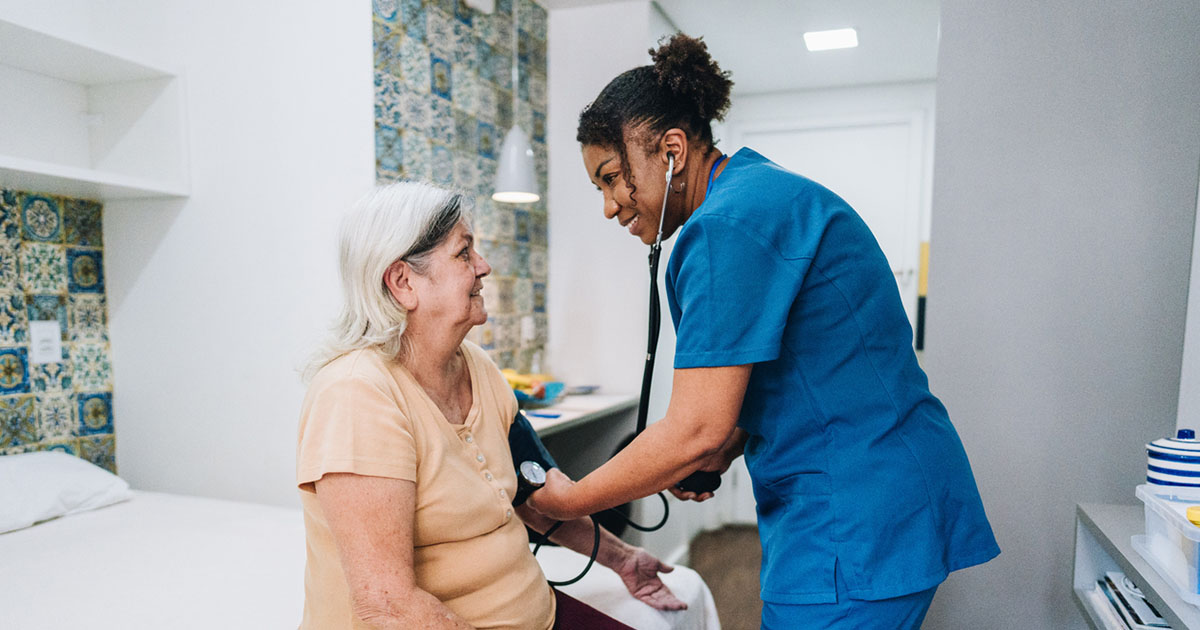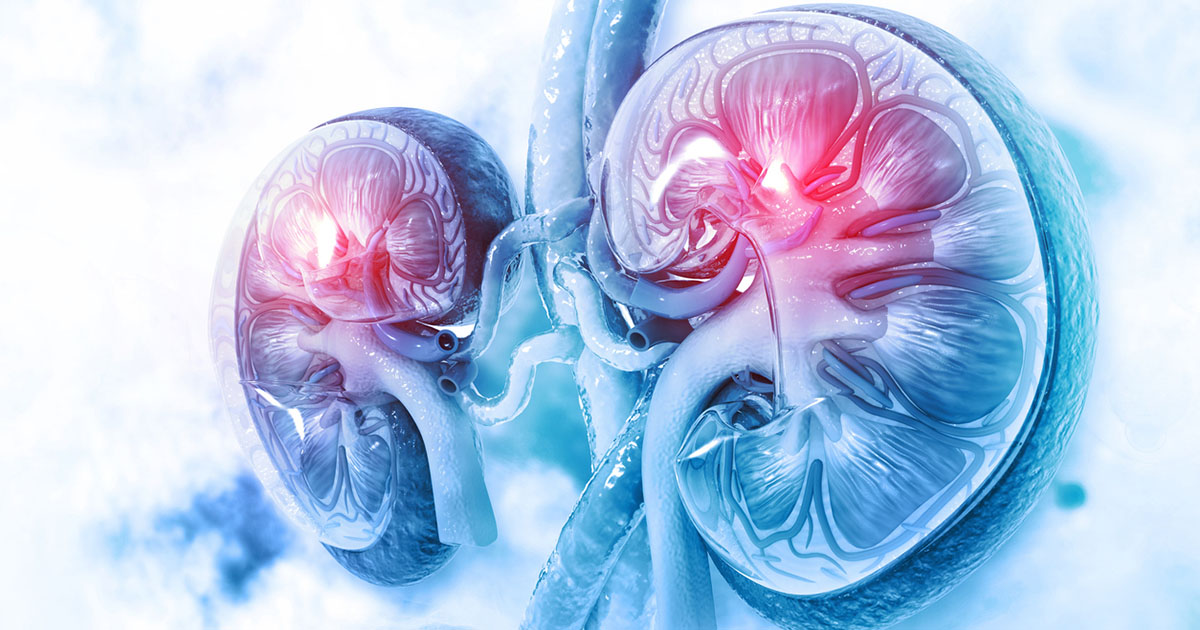Data from 2013 indicate that approximately 2.8 million people in England are diagnosed as having diabetes (Health and Social Care Information Centre, 2014) and this is expected to rise by 5% per year (NHS England, 2014). Furthermore, it has been estimated that in 2010–11, £8.8 billion was directly spent on care for people with type 2 diabetes (Hex et al, 2012). Of even greater importance is the significant impact that type 2 diabetes has on people with the condition and carers through complications and the increased risk of premature mortality.
Impaired glucose regulation (IGR) can be described as a blood glucose level above the normal range but below that required for a diagnosis of type 2 diabetes (Nathan et al, 2007). Compared with people who have normal blood glucose levels, those with IGR are 5–15 times more likely to develop type 2 diabetes (Killoran et al, 2012). It is also recognised that, without intervention, the majority of people with IGR will develop type 2 diabetes within 5–10 years (Nathan et al, 2007). For those people at highest risk of developing type 2 diabetes, evidence suggests that modest lifestyle changes can postpone or even prevent the onset of diabetes (Tuomilehto et al, 2001; Knowler et al, 2002). Identification of IGR supported by effective lifestyle interventions therefore represents a significant opportunity to prevent or delay the onset of type 2 diabetes.
The benefit of developing strategies to prevent type 2 diabetes is clear. Support for an approach to diabetes prevention is offered by NICE public health guidance 38 (NICE, 2012), which provides advice on the appropriate interventions for the prevention of type 2 diabetes for those at high risk. In addition, the NHS Health Check programme (Department of Health, 2013) provides an opportunity to identify and support those at risk of type 2 diabetes. It is against this background that the Merseyside Impaired Glucose Regulation Pathway has been developed and launched.
Pathway overview
The Merseyside IGR Pathway was developed by a multi-stakeholder group of professionals and patients in Merseyside. The pathway (Figure 1) is initiated via the NHS Health Check programme or opportunistically in primary care. The risk factors are obesity, a high blood pressure reading or a positive family history (Department of Health, 2013). Identification is usually via HbA1c testing, with a result of 42–47 mmol/mol confirming IGR, as recommended by the World Health Organization (2011). The primary care teams work with individuals to explain the meaning of IGR and to provide IGR-specific advice and support. Each person with IGR is given IGR-specific lifestyle literature and is supported by primary care colleagues to develop achievable aims using an individualised goal planner. Individuals are recorded on the primary care IGR register and offered an annual review in the GP surgery. A referral is made to lifestyle services, which offer one-to-one, individually tailored, evidence-based IGR lifestyle advice and facilitated access to lifestyle services. Lifestyle providers have been specially trained in IGR, with both primary care and lifestyle providers using consistent literature and advice, as per the pathway.
The timeline of the IGR project has followed advancements in the available evidence on lifestyle modifications, development of supporting national guidelines (NICE, 2012), changes in commissioning structures and local evidence gathered to inform pathway development. Figure 2 provides an overview of the key milestones.
Building the case for change
Initial concept
Locally, a joint diabetes health needs assessment developed by Public Health for Sefton, Knowsley and Liverpool demonstrated the increasing prevalence of type 2 diabetes. During 2010, stakeholders from across the region, including the Diabetes Network and Public Health, compiled the initial evidence review of cost-effective interventions to identify and manage IGR. This demonstrated that modest lifestyle changes can prevent or delay the onset of type 2 diabetes for those at high risk, and that lifestyle intervention is more effective than the use of metformin. The evidence also highlighted that cost savings could be achieved by preventing or delaying the onset of type 2 diabetes.
Identifying current practice
As limited practical examples of IGR identification and management were available, a local survey was developed to identify current practice. In February 2011, electronic surveys were sent to all GP practices in Liverpool, Sefton and Knowsley, with 98 respondents (response rate, 39%). The findings identified variation across the region as to whether people with high blood glucose levels were given a diagnostic code, as well as variation in the follow-up and management of people with IGR. The survey also identified an expressed need from GPs for a shared pathway and guidance focusing on lifestyle intervention. There were also discussions about how to improve patient concordance with treatments and reviews.
Modelling the prevalence
NHS Health Check modelling yielded an estimated IGR prevalence for England of 2.3% (Public Health England, 2014). In September 2011, a clinical audit was undertaken to identify the numbers of patients recorded on IGR registers across Merseyside. Six emerging clinical commissioning groups (CCGs) supported the audit of 148 GP practices, and 758780 patient records were sampled. The audit identified 0.8% of the registered patient population recorded as having a diagnostic code including “Impaired Glycaemia”, “Impaired Glucose Tolerance” or “History of Gestational Diabetes”. Despite this representing a doubling since 2006, it was still suggestive of significant under-identification. Of those patients identified, 24.5% had a recorded BMI, and among these, 34.5% had a BMI ≥25 and <30 kg/m2 (overweight), while 47.3% had a BMI ≥30 kg/m2 (obese). Also of note was that 0.2% of overweight and 1.2% of obese individuals were recorded as having been referred to a weight management service. Overall, the audit demonstrated a need to identify and support individuals to make lifestyle changes.
Business case
The publication of NICE public health guidance 38 (NICE, 2012) and the support for use of HbA1c in the identification of IGR (World Health Organization, 2011) provided the catalyst to enable development of a cost-effectiveness model. Data from the audit and the NHS Health Check modelling enabled local modelling to be undertaken to identify the potential economic impact of different pathway options. The modelling demonstrated that by delaying or preventing the onset of type 2 diabetes, approximately £1648690 could be saved annually and 650 cases of type 2 diabetes could be prevented in years 1 and 2. A business case was developed on the basis of this work, with a recommended course of action to develop an IGR pathway consisting of identification in primary care, followed by effective lifestyle intervention and follow-up.
Development of the pathway and guidance
The development of the pathway took place at a time of organisational transition; therefore, support was sought from pre- and post-transition organisations to ensure continuity of development and delivery. A project steering group was established to oversee the process, which was led by Merseyside Diabetes Network. This group brought together representatives from public health, general practice, secondary care, allied health professions and commissioning, as well as patients and carers. A second steering group comprising public health representatives from across Merseyside was also set up to develop the lifestyle element of the pathway.
Local funding was obtained to commission insight research through the Behaviour and Insight team at Public Health Liverpool, and this informed the development of the pathway and supporting materials. In October 2012, 65 people with risk factors for type 2 diabetes were recruited from 11 localities in Merseyside. The insight research was conducted through individual and paired interviews and focus groups, and the results were analysed using the Department of Health’s Healthy Foundations Life-stage Segmentation Model (Department of Health, 2011). Stage 1 of the insight work was designed to explore attitudes towards IGR and initial thoughts on the pathway. Stage 2 was used to inform the development of the pathway to ensure it was designed to meet the needs of patients and to encourage lifestyle change. In addition to the insight work, engagement was undertaken with groups with protected characteristics.
A key finding from the research was the importance of language. A number of terms for IGR were tested including “pre-diabetes”, “high risk” and “non-diabetic hyperglycaemia”. People who had risk factors for diabetes preferentially selected the term “borderline diabetes” as it was felt this that implied they could do something to prevent or delay the onset of type 2 diabetes (see Box 1). “Pre-diabetes”, in contrast, was seen as suggesting that developing diabetes was inevitable; as such, “pre-diabetes” was not seen as a motivator for change. “High risk of diabetes” was found to mean different things to different people but, in general, was deemed to be particularly useful in communicating IGR to those from black and minority ethnic groups.
The term “borderline diabetes” proved to be a challenge for the many professionals across the region who did not recognise this as valid. Nevertheless, as the insight demonstrated that “borderline diabetes” was the most effective term with which to communicate IGR and motivate lifestyle change, the decision was made that this would be the primary term to use throughout the patient literature. Through the insight work, a definition was collaboratively created with participants in the research that would support individuals in understanding IGR and motivate them to make lifestyle changes (the term “IGR” was incorporated to avoid confusion between health professionals and patients):
“Borderline Diabetes, called Impaired Glucose Regulation (IGR) by health professionals, is serious because it significantly increases your risk of getting type 2 diabetes. It can also double your chances of suffering from heart disease or stroke. The good news is you may be able to delay or prevent Borderline Diabetes/IGR from progressing any further.”
Box 2 highlights the key findings of the insight and engagement work and the resulting improvements to the pathway.
Additional activities
In order for people with IGR to be prioritised in lifestyle services, the service specification for providers required amending to build capacity to deliver the additional activity generated. Consensus and agreement was gained from the five directors of public health across Merseyside. A risk was identified in the reporting of HbA1c results from pathology systems, in that HbA1c results that were within the IGR range recommended by the pathway, but below the threshold for a diagnosis of diabetes, would not be flagged as abnormal on GP clinical systems. Representation was made to the pathology laboratories across Merseyside and a change to reporting enabled clear identification of IGR.
A further evidence review of translational studies was undertaken in 2013 by public health to evaluate the evidence base and inform development of the lifestyle intervention. An IGR-specific training package for lifestyle service staff was designed and developed, based on the evidence review and the findings of the insight and engagement work. Prior to launch, a summary pack was produced for primary care staff that contained an overview of the pathway, key messages from the insight and engagement work, a summary of the evidence base and guidance on the management of exceptions.
The pathway and guidelines were formally launched across Merseyside in November 2013 to coincide with World Diabetes Day. In December 2013 all lifestyle staff undertook IGR-specific lifestyle training. Following the regional launch, local events at each of the CCGs in Merseyside took place, led by the local CCG GP lead and steering group members.
Initial indications from local launches have been promising. For example, in Knowsley, a systematic approach to launching the pathway was undertaken. eMIS Web templates were developed to support IGR reviews within the GP setting and electronic referral forms to the local lifestyle hub were altered to include the IGR pathway. In addition to a local IGR pathway launch, practice manager and practice nurse forums were targeted to provide role-specific awareness and education and to emphasise the tasks needed to be undertaken by each professional to make the IGR pathway a success.
To date, in Knowsley, 389 people have been referred by general practice to the lifestyle hub over an 11-month period. Of these referrals, 77% have taken up the offer of lifestyle support for IGR and are actively engaged or have completed the lifestyle services pathway. Research is currently taking place on the outcomes achieved.
Learnings from local implementation
It is hoped that the learnings from the Merseyside experience (Box 3) can be utilised in the development and implementation of similar pathways for IGR in other areas. Development of novel and innovative ways of working, however, can be challenging. From initial agreement to business case and implementation took three-and-a-half years. This was partly due to implementing a programme at a time of considerable organisational change. In addition, a project of this size required rigorous adherence to due process and engagement. In order to progress and deliver this project at scale, sign-up was required from each of the six local CCGs, the five local authorities and the clinical diabetes network. Coordination was required at each stage of the project in order to ensure consistent timescales and delivery across the organisations involved. High-level agreement and support was also required throughout the project. Local debate to reach consensus was required; for example, debates took place on: using HbA1c as the default blood test; if and when to use metformin; terminology; and the potential medico-legal issues. This sometimes resulted in a delay while further work was undertaken to collect the necessary evidence of best practice.
Conclusion
Taking a network approach to development and implementation of the Merseyside IGR Pathway has been a vital ingredient in the success of the project at scale. The forum provided by the diabetes network enabled a wide range of professionals and patients to come together with a shared purpose and work across organisational boundaries to take action to reduce the incidence of type 2 diabetes in Merseyside. This shared approach resulted in the development of a consensus and the sharing of skills, knowledge and experience. In practical terms, by working together the multi-stakeholder group has shared workload and responsibilities and produced a pathway, guidelines and supporting materials of greater quality and practicality than could have been developed by any individual organisation. By working together, it was possible to identify areas with lead expertise and thus the burden of work was shared. For example, Liverpool Local Authority took the lead on the insight and engagement work, Halton Local Authority took the lead on commissioning lifestyle training and Knowsley Local Authority led the evidence reviews. By working together, the region has established “buy-in” and momentum behind the shared desire to reduce the incidence of type 2 diabetes and the collective will to make this happen at pace and scale.
A focus on prevention is vital if we hope to reduce the incidence of type 2 diabetes. The work on pathway and guideline development is complete and freely available. We hope that colleagues consider IGR as a priority issue that can be addressed by working together for the benefit of patients and we encourage colleagues to utilise the learning from our experience in Merseyside.
For a wide range of materials relating to this pathway please visit: http://bit.ly/1Bmepqw.





Scotland-wide advice to inform the process of making injectable weight management drugs available and to prevent variation between Health Boards.
14 Nov 2024